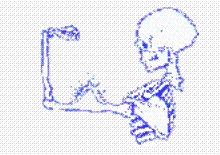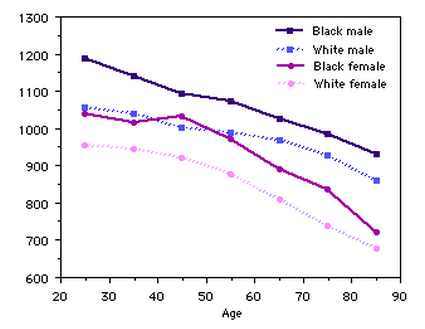Overview Osteoporosis and vitamin D
Summary
FACT: Bones need Calcium (this has been known for a very long time)
FACT: Vitamin D improves Calcium bioavailability (3X ?)
FACT: Should not take > 750 mg of Calcium if taking lots of vitamin D (Calcium becomes too bio-available)
FACT: Adding vitamin D via Sun, UV, or supplements increased vitamin D in the blood
FACT: Vitamin D supplements are very low cost
FACT: Many trials, studies. reviews, and meta-analysis agree: adding vitamin D reduces osteoporosis
FACT: Toxic level of vitamin D is about 4X higher than the amount needed to reduce osteoporosis
FACT: Co-factors help build bones.
FACT: Vitamin D Receptor can restrict Vitamin D from getting to many tissues, such as bones
It appears that to TREAT Osteoporosis:
Calcium OR vitamin D is ok
Calcium + vitamin D is good
Calcium + vitamin D + other co-factors is great
Low-cost Vitamin D Receptor activators sometimes may be helpful
CONCLUSION: To PREVENT many diseases, including Osteoporosis, as well as TREAT Osteoporosis
Category Bone Health has items
Note: Osteoporosis causes bones to become fragile and prone to fracture
Osteoarthritis is a disease where damage occurs to the joints at the end of the bones
See also Vitamin D Life
Osteoporosis treatment with denosumab is helped by Vitamin D and Calcium – 2017
4X increase in osteoporosis visits, but vitamin D information is still not available – May 2013
Vitamin D and Bone Health – UK National Osteoporosis Society – April 2013
High Selenium intake cuts risk of Osteoporosis in half - meta-analysis - July 2023
Osteoporosis and vitamin D are important in men too – 10 years after women – Aug 2012
Vitamin D, K2, Magnesium, etc together increase bone density – Jan 2012
Do not just take more Calcium if you fear Osteoporosis- Mercola Dec 2010 from book: The Calcium Lie
Fewer falls and fractures as vitamin D is increased – 1800 to 4000 IU July 2010 2 abstracts with chart
Osteoporosis medicines - several include vitamin D from National Osteoporosis Foundation
Vitamin D recommendations by Osteoporosis Canada - Sept 2010 800-2000 IU daily, 10,000 IU is probably safe
Review of vitamin D pathways to bone health - July 2010 with many summaries of vitamin D INTERVENTIONS
Low Calcium and vitamin D makes osteomalacia but either makes osteoporosis – Sept 2010
Prefer more than 30 ng of Vitamin D and 700 mg Calcium for Osteoporosis – Mar 2011
Wrist fracture is also associated with vitamin D inadequacy – Feb 2011
Half of orthopedic surgeries had vitamin D less than 32 ng – Dec 2010
Low vitamin D before orthopedic surgery – dark skin 5X more likely – Oct 2010
- suspect not just dark skin, but those also at risk of being low on vitamin D: sunlight, elderly, medical problems, etc.
Cochrane review finds that Vitamin D helps prevent fractures– downloaded Feb 2010
Osteoporosis reduced by 800 or more IU of vitamin D - July 2010
Would there be fewer stress and bone fractures with vitamin D?
890 IU of vitamin D and 1200 mg Calcium improved bone density – July 2010
Both Calcium AND vitamin D needed to prevent elderly fractures – Sept 2010
Calcium and just 900 IU of vitamin D can improve Bone Density – July 2010
400 IU of Vitamin D Magnesium and Calcium helped Twin bones – Feb 2011
- 400 IU is the least amount of vitamin D - wonder how low of vitamin D needed if take all of the co-factors
75 percent of hip fractures associated with vitamin D deficiency - Jan 2011
Low vitamin D may account for half of the reasons for osteomalacia – Oct 2010
Fewer falls and fractures as vitamin D is increased – 1800 to 4000 IU July 2010
Calcium and Vit D reduce fractures but increase kidney stones - 2006 when take 2000 mg Calcium
Calcium level somewhat higher due to vitamin D might be a problem – June 2010
Calcium citrate and more than 800 IU of vitamin D to treat Osteoporosis – Mar 2011
1800 to 4000 IU vitamin D to get 30 to-44 ng no risk osteo - July 2010.pdf file
Cadavers with good skeletons had 30 ng of vitamin D – Feb 2010
Osteoporosis increasing and vitamin D decreasing in Middle East - Oct 2011
Very few people have an allergic reaction to Vitamin D start slowly so as to check for allergies
Osteoporosis medicine teriparatide increased active vitamin D by 25 pcnt– RCT June 2012
Osteoporosis is reduced by vitamin D, genes determine how much is needed – meta-analysis Nov 2012
Osteoporosis spot therapies: vitamin D with Calcium was the most popular – Feb 2013
Safety profile of Osteoporosis drugs, including vitamin D – review Nov 2013
^ WHY Vitamin D can PREVENT both Osteopenia and osteoporosis
but not TREAT Osteoporosis
Vitamin D, in combination with it’s co-factors of Calcium, Magnesium, Vitamin K2, etc. is able to increase Bone Mass Density, that is, increase the amount of bone in the body. A bone is made up of a large number of tiny bridges. One a bridge is broken, adding bone bone does not repair the bridge, it just thickens the bridge supports.
This was found decades ago – medicines which increased Bone Mass Density (BMD) did not TREAT Osteoporosis. Suspect, but do no know, that this is true as well for vitamin D^
Bone Density decreases with age

Osteppenia and Osteoporosis Orthobullets 2020
See also Osteoporosis-studies.com
A few of their excellent tags. Ceased updating in Aug 2015
{SPLIT(fixedsize="y" colsize="45px")}
Balance (11)
Diet (149)
Drugs (76)
Beta Blockers (15)
Bisphosphonates (13)
NSAIDs (8)
Statins (7)
Dyslipidemia (22)
Exercise (46)
Glycation (4)
Homocysteine (15)
Hormones (43)
Nicotine (8)
Sclerostin (11)
Blosozumab (3)
Romosozumab (5)
Supplements (618)
Berberine (22)
Cissus (10)
Creatine (10)
Curcumin (15)
GLA (7)
Glucosamine (8)
Inositol (4)
IP-6 (Phytate) (9)
Lipoic Acid (12)
Minerals (157)
Omega-3 (40)
Omega-6 (11)
Phytoestrogens (35)
Polyphenols (58)
Prebiotics (42)
Resveratrol (19)
Taurine (10)
Vitamin B (15)
Vitamin C (18)
Vitamin D (38)
Vitamin E (20)
Vitamin K (58)
Xylitol (14)
{SPLIT}
See also Web
Improved Quality of Life with Osteoporotic Disorders if have high Vitamin D - Dec 2022 10.3390/ijerph192417023 FREE ODF
Clinical Trials of Osteoporosis with vitamin D INTERVENTION 260 trials as of Dec 2022
CLICK HERE for Strong Bones and Vitamin D
- Dr. Susan Ott at the University of Washington

- The Myth of Osteoporosis Author's website of the June 2011 revised book
- The drugs offer minimal (if any) benefit amidst ever-increasing evidence for serious harm, but they continue to be widely prescribed while massive profits roll in for the companies that produce them.''
- Osteroporosis Vitamins web site in Canada Site owner has treated her own Osteopenia
- talks extensively about 5000 IU of Vitamin D, Magnesium, Vitamin K, Strontium, Calcium, etc.
- Dr. Sato has now Proven, Three Different Times, that Sunlight Exposure can Reverse Osteoporosis and Prevent Hip Fracture. Is Anyone Paying Attention?
- March 2013 Sunlight Institute: Showed that being indoors (in hospital) greatly decreased bone mass and strength
- Osteoporosis Is Scurvy of the Bone, Not Calcium Deficiency Green Medical information
- Need Vitamin C, Vitamin D, Vitamin K2
- Vitamin C: Mineralizes the bone and stimulates bone forming cells to grow, Prevents too much degradation of bone, Dampens oxidative stress, Is vital in collagen synthesis.
- Treating Osteoporosis UC San Diego
- Describes WHO’s Fracture Risk Assessment (FRAX) Tool., which considers
- Bone Mineral density, Age, Sex, Weight, Height, Fracture history, Parental history of hip fracture,
- Smoking status, Alcohol consumption, Prescription drug use, Other disease diagnoses But NOT Vitamin D level
- Men Get Osteoporosis, Too NYT Oct 2016
- "Men experience about half as many osteoporotic fractures as women. But when a man breaks his hip because of osteoporosis, he is more likely than a woman similarly afflicted to be permanently disabled and twice as likely to die within a year"
. . :because doctors, too, are often unaware of the many factors that put men at risk of osteoporosis, including disorders like celiac disease and chronic obstructive pulmonary disease (C.O.P.D.) and treatments for other health problems, like depression, gastric-esophageal reflux disease (GERD) and prostate cancer"
Osteoporosis malady MalCards has the following graphic
Top 20 diseases related to Osteoporosis via genes ( most of which are associated with low vitamin d)

- Osteoporosis Myth: The Dangers of High Bone Mineral Density Green MedInfo - Aug 2012
- Make the case for reduction of bone density it just feature of aging
- Fails to notice that aging is also associated with reduction in vitamin D and Magnesium (and Vitamin K2?)
- "Bone Mineral Density is NOT Equivalent to Bone Strength"
- "Breast Cancer is 200% to 300% higher if high bone mineral density"

Most of the NIH article in Jan 2011 was mainly on exercise to reduce osteoporosis
Vitamin D was barely mentioned
"Like a diet rich in calcium and vitamin D, exercise helps strengthen bones at any age"
No mention was made of vitamin D supplements, Vitamin D co-factors, UV, Vitamin K, or Whole Body Vibration Did have the following nice graphic however **
[http://www.drdavidgrimes.com/2013/11/osteoporosis-forget-calcium-and-vitamin.htmlOsteoporosis : forget calcium and vitamin D - but what about HRT ?] Dr. Grimes blog post Nov 2013
Vitamin D is useful, but women should consider taking HRT from menopause to 20 years before death
But not take HRT if had Breast Cancer
Vitamin D, with or without Fosamax, is highly rated to TREAT Osteoporosis at Rate A Drug July 2011
 * Note: Vitamin D does even better than Fosamax at PREVENTION *---
* Note: Vitamin D does even better than Fosamax at PREVENTION *---
Hypothesis: Moderate osteoporosis itself is beneficial for bones - Oct 2019
Med Hypotheses. 2019 Oct 10;134:109427. doi: 10.1016/j.mehy.2019.109427
Xiong Z1, Wu J1, Liu Z1, Jing W2.
There have been increasing numbers of reports that anti-osteoporosis drugs cause osteonecrosis. A typical example is medication-related osteonecrosis of the jaws (MRONJ) which can cause massive necrosis and defects of the jaws. Thus, the dosage and effects of anti-osteoporosis drugs should be re-examined. Our hypothesis is that primary* moderate osteoporosis itself is beneficial for bones and should not be excessively treated other than vitamin D, calcium supplementation and functional exercises . The self-repair and anti-infection abilities of bone depend on its organic tissues including stem cells, blood vessels, osteoclastic and osteogenic factors in bone, which jointly fight against invading pathogens and repair bone damage. Recent evidence supports age-related changes in mesenchymal stem cell including loss of self-renewal and increases in senescent cell numbers. Thus, the number of MSCs and vessels need to be increased to achieve functions similar to those in young people. This requires dissolving a portion of inorganic materials and providing extra space to hold more cells and blood vessels. In contrast, anti-osteoporosis drugs prevent bone destruction, and increase mineralization that occupies the space of organic materials, reduces bone immunity and self-repair *. Moreover, long term use of anti-osteoporosis drugs also have negative effects on long bones and cartilages. Therefore, moderate age-related osteoporosis is natural in humans to protect bones. Excessive treatment of osteoporosis weakens immunity and self-repair.
Admin of Vitamin D Life put together a page on Strong Bones in 2008 before learning about vitamin D
CLICK HERE which includes** Dr. Colgan recommends the following supplements for Strong Bones (page 140)__
400 mcg of Vitamin K daily in the form of menaquininone, MK4 or MK7,
2000 mg of calcium carbonate, (update: this is too much if you also take > 2000 IU of vitamin D)
1,000 mg of phosphorus,
800 msg of magnesium citrate,
350 mg of strontium citrate,
20 mg of zinc picolinate,
200 mg of silicon (Horsetail extract),
3 mg of boron,
25 mcg of Vitamin D3, (1000 IU)
